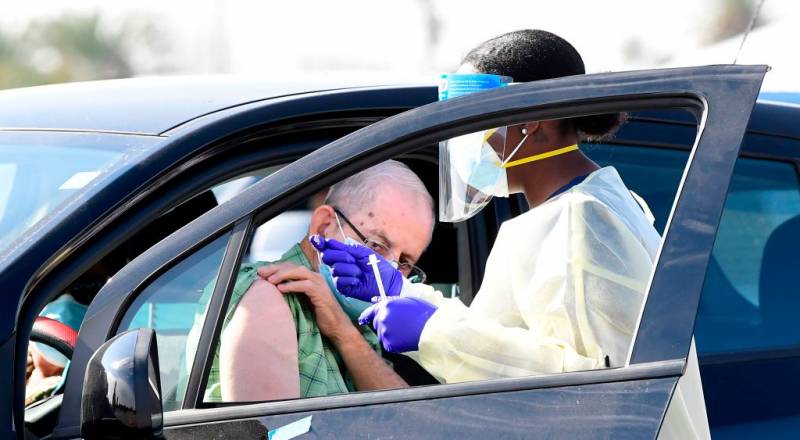With a scarce vaccine supply and a mounting death toll, the tension between equity and efficiency is increasing.
“The feedback that we got is, the first system is too complicated, it’s slowing us down,” said Tomás Aragón, the new director of the state’s Department of Public Health, who helped outline the new age-based priority proposal at public meetings on Jan. 12 and Jan. 20. “Got to keep it simple. Simplicity is going to save lives.”
Distributing vaccines by age is easier and will help ease the burden on the state’s overwhelmed health care system, Aragón said. Older people account for 65% of ICU admissions in California and 83% of deaths, according to the latest state health data.
But there are 6.2 million Californians 65 and older, and the state is only receiving up to 500,000 doses of vaccine every week, according to state epidemiologist Dr. Erica Pan. At that rate, the state wouldn’t begin vaccinating essential workers until May.
Disparate Impacts
Equity advocates called this proposed delay “disturbing,” arguing that many agricultural workers face equal or higher health risk at work than do elderly people who may have the means to shelter at home.
“Not everyone that’s 65 and over has the same level of vulnerability,” said Diana Tellefson Torres, executive director of the United Farm Workers Foundation. “Farmworkers are a very vulnerable population regardless of age.”
For example, 13% of agricultural workers have never been to a doctor and 78% do not have insurance, according to a UFW Foundation survey of 14,000 workers. Farmworkers, grocery store workers and meatpackers, who cannot work from home, have been disproportionately impacted by the coronavirus.
It’s for those reasons the state initially placed food workers — along with teachers, emergency responders and people over 74 — next in line to get the vaccine after health care workers and residents and staff of long-term care homes. Some counties and employers had already notified these workers that they were next in line before the governor on Jan. 13 expanded eligibility to include people 65 and older.

